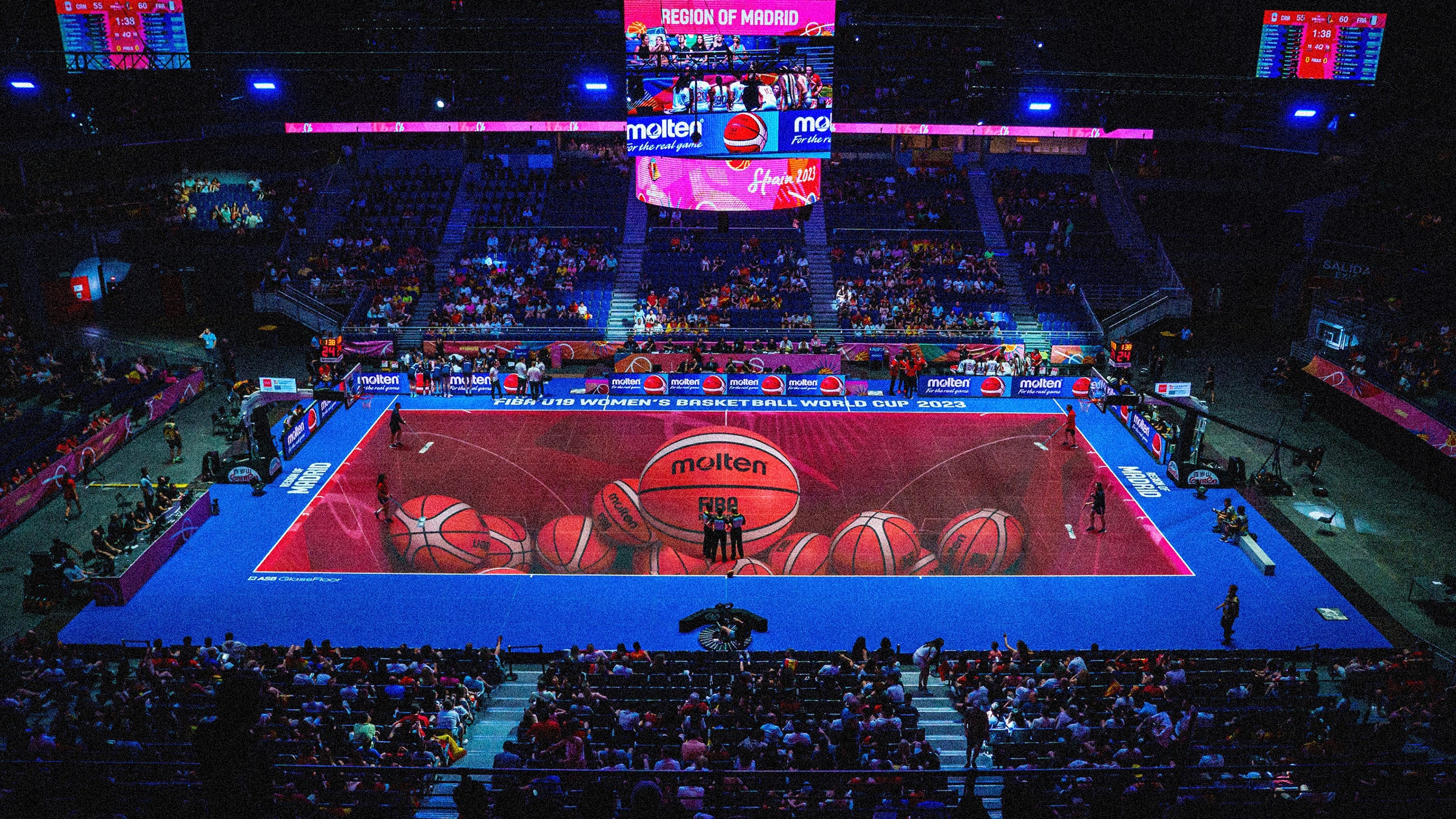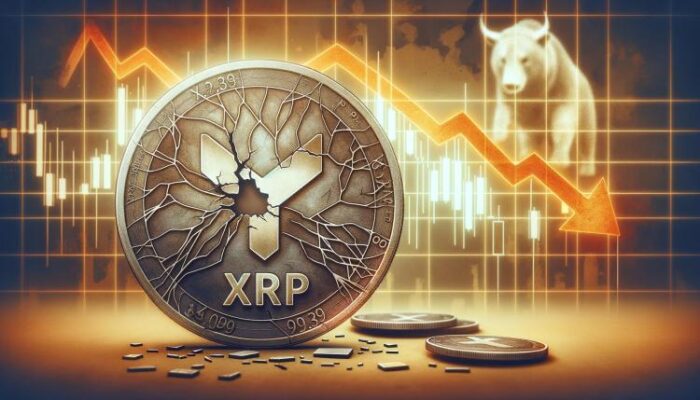I stood on an indoor basketball court in Orlando, Florida, in mid-May, ball in hand and LeBron 15 sneakers on my feet, ready to run some drills.
My instructor drew up a basic diagram for me to follow in my next drill using an iPad. He showed how he wanted me to start at the baseline, then curl up to the corner of the free-throw line before taking a pass and driving to the basket. Easy enough to remember.
Here’s the thing, though: I didn’t have to remember any of the words he spoke or any of the lines he scribbled. That’s because, as he drew on his iPad screen, his diagrams simply appeared under my feet. Anytime he wanted to change or remove the drill, he simply tapped the iPad’s screen, and everything on the floor changed instantly, illuminating my new route.
The court was inside a demo facility for ASB GlassFloor, a pioneer in LED flooring used across several major sports.
Over the course of an afternoon visit, ASB’s team took me through a catalog of visual experiences on their basketball court setup. Name an NBA team court design; they could swap it onto the surface we were standing on with one tap. Any practice drill template could be loaded onto the floor using ASB’s “Whiteboard” feature, a potential capability leap for basketball coaches and trainers. The company tells me that soon, these diagrams could feature active animations that change as the drill is completed. Meanwhile, a sensor in my pocket tracked my movements and created fun effects on the LED panels beneath me, like a trail of flames that flittered behind me as I ran. (This in-person demo was made possible by ASB covering some travel costs.)
Nearly every NBA team has spent time on this same court, ASB says, as part of a practice gym arrangement in Orlando that’s involved team visits during the 2024-25 season. Company reps report incredible feedback, from players impressed by the court’s visuals to coaches and trainers who immediately fell in love with the Whiteboard and connected “Playbook” features. One visit from the Toronto Raptors went viral.
These eye-popping visual elements, which also offer immense potential in areas like fan engagement and advertising, were what first caught my attention. But I quickly realized that this step forward in surface technology isn’t confined to flashy visuals. In fact, many of its greatest long-term impacts could be seen in tangential areas like player health tracking and deep game data analysis, made possible by the floor’s ability to integrate a variety of tracking sensors.
A light-up floor on full display during a Champions League game in Belgrade, Serbia. Courtesy of ASB GlassFloor
Giant Steps
ASB GlassFloor has deep roots in sports surface manufacturing.
The company was founded in 1965 as a drywall construction entity by Horst Babinsky in Germany under the name Trockenausbau Horst Babinsky KG. It initially broke into the sports scene by creating squash courts from high-density wood panels in the mid-1970s. Previously, high-level squash was exclusively played on plaster, and as Babinsky’s son Christof—now the company’s CEO—tells it, this innovation was initially scoffed at by squash’s governing bodies. When it came to market, though, wood was quickly judged as superior.
ASB became a leader in squash court manufacturing and maintained this position for decades, including a mid-2000s introduction of a new glass-based surface and glass enclosure setup that’s become the standard for squash competitions worldwide.
Christof joined the company to succeed his father as CEO in 2012, and ASB began focusing on LED surfaces. The first such product was a simple floor display called “ASB Multisports” that could switch between markings for various hardcourt sports like basketball, volleyball, and handball. By 2015 the company had also developed “ASB Lumiflex,” the fuller LED display court I dribbled across in Orlando.
The company shifted focus to gaining official approval from FIBA, the world’s governing basketball body, during the Covid-19 pandemic, and it succeeded in 2022 when FIBA changed the rules for official allowable playing surfaces to include glass in addition to traditional wood. ASB’s first official FIBA event was the under-19 Women’s World Cup in 2023.
Recent client installations include European basketball teams Bayern Munich and Panathinaikos, both of which have played all their home games during the 2024-25 season on ASB courts; NBA All-Star Weekend 2024 in Indiana, which utilized ASB for several events including the dunk and three-point contests; the University of Kentucky’s “Big Blue Madness” event in 2024; plus several other pro and collegiate teams or facilities across multiple sports.
Commercial and fan engagement opportunities abound with this technology, which opens the court up as a massive blank canvas. Some of the time, the surface appears just like a traditional parquet playing surface, with realistic images of wood panels. Suddenly, though, it can transform into something else.
When free throws are shot during a basketball game, for instance, most players tend to spend 45 to 60 seconds standing on one side of the court. ASB clients can use the available space on the other side of the floor to, say, show a graphic on the shooter’s free-throw percentage—with an accompanying brand partner’s logo right alongside it.
“This surface has allowed us to completely reimagine how we connect with fans and how we deliver value to our commercial partners,” Thanos Bichtas, head of marketing for Panathinaikos, tells me in an email. “Whether it’s dynamic intros with custom court animations, or live visual effects that react to big plays, we’re now offering a level of visual storytelling that transforms the arena into an interactive experience.
Bichtas says the court has become a high-impact platform for brand visibility. “And crucially, it doesn’t disrupt the fan experience; it enhances it.”
Infinity League, an indoor soccer league with teams from Germany and Italy, utilizes the glass surface to juice up the action. Photo courtesy of ASB GlassFloor
Floor Exercises
On my visit, I was shown a suite of kid-friendly activities that could turn these courts into educational hubs during school hours, from various scale renderings of dinosaurs and sea creatures to a feature that lets kids design mazes to run through. Bichtas says Panathinaikos has already used its ASB court to host a number of events, from brand activations to basketball skill clinics for fans—younger ones especially. Christof, a Go-Kart enthusiast, envisions an entire racetrack setup on one of ASB’s courts in the near future.
“If you look at an arena’s infrastructure, it costs somewhere around 250 to 350 million Euros,” Babinsky says. “If you put our floor in there, that’s just about 1 percent more of the overall budget. But having that floor in there will allow the arena to be used much more often, because suddenly you don’t have an arena used for a home game every two weeks. No, you can have kids in there Monday morning.”
“We’re working on a bicycle school; an insurance company in Germany will sponsor the use of the arena for kids to come in, in year three of their school, and learn how to ride a bike. And when a bus runs over your 10-year-old, there’s no blood splattering around. There’s a buzzer sounding, and it will be red and everybody will see why this happened.”
A little morbid, Christof! But illustrative.
On Your Marks (OYM), an elite Swiss training complex that works with national team athletes across over a dozen sports, uses the “ASB Multicourt” product to swap through various court line configurations in its three-court setup. By tweaking the displays, OYM can make the whole facility work either as three separate courts or one extremely large floor. “Click and immediately the lines are changed,” says Lucie Bischof, group lead of sales and marketing for OYM. “It’s super simple and works very well, and fast.”
The University of Kentucky’s Rupp Arena is transformed by the interactive surface. Courtesy of ASB GlassFloor
This feature lets facilities with the full LED setup serve as an immersive proving ground. While his team only got a brief experience on the court for a practice before its “Big Blue Madness” event in fall 2024, Kentucky basketball coach Mark Pope saw the potential to help his team prepare for road games in a whole new way: Experiencing the opponent’s court before actually visiting it.
“Just being able to go for two days and practice on a floor that’s the same color scheme and the same font, the same markings as the road game you’re going to play,” Pope tells me. “I do think it’s limitless, the potential of this court.”
Moments later, Pope mused about the court being used for giant replays—already a functional feature, ASB tells me. “So when you see me get a [technical foul] for saying the wrong word, you can see me in 60-foot size and there will be no arguing with what was said,” Pope joked.
Sudden Movements
These visual features, though, might not even be the most interesting part of the technology’s prospective future.
Things got interactive during another drill later in my Orlando visit. As soon as I crossed half-court with the ball, a “virtual defender” in the form of a yellow circle on the court “ran” out to “guard” me, forcing me to dribble around it and make a layup to complete the drill. This exercise can be done with up to five players and five virtual defenders at once.
This and similar features are made possible by a tracking system set up in the facility. The walls of the court feature capture devices from ShotTracker, a basketball data analytics company most active in the college basketball space. A ShotTracker sensor in my pocket (it’s typically in a waistband or sports bra for high-level athletes) connects with those capture devices and pinpoints my location on the floor. ASB reps tout the company’s ability to integrate any kind of existing player tracking system into its court setup, whether optical or sensor-based.
Integrations like these open up a whole set of potential uses. Team practices could take on a new feel with a built-in diagraming tool at players’ feet. The NBA, for instance, maintains a leaguewide optical player tracking system accessible to all its teams; an NBA team using an ASB court could conceivably download an upcoming opponent’s recent plays based on this data, then ready itself for those plays by practicing with accurate on-court diagrams.
Maybe most notably, though, these tracking integrations plus the nature of ASB’s court surface offer future potential in player health and injury prevention programs.
The court surface, at least on its face, is much more conducive to long-term athletic use than wood. ASB claims its courts use glass that is 2.8 times more elastic than the hardcourt products found in the US today, which are primarily made from hard maple (29 of 30 NBA courts use hard maple, while the Boston Celtics use their traditional red oak). The surface is supported by an aluminum substructure with bearing points that reduce impact force horizontally.
When running and jumping on ASB’s floor, I noticed a significant difference in the feel compared to my experiences on wood courts in the past. Seasoned athletes playing on it for the first time will have to adjust to it.
With LED displays embedded beneath the glass surface, court lines can be redrawn in an instant, from basketball to tennis to the volleyball court shown here. Courtesy of ASB GlassFloor
The court has a matte surface, which is achieved using a deep etching process, and is covered in tiny ceramic dots (under a millimeter apiece in size) that provide shoe grip. The company claims skin burns cannot happen on its surface; I made multiple efforts to prove them wrong, but never burned my skin even when sliding forcefully. Bischof tells me many OYM athletes who train at her facility, volleyball and handball players especially, love this feature.
The LED surface reflects sweat in a way that makes it much more visible here than on a wood court, which is helpful for avoiding slippery spots. Sweat also evaporates off the glass faster than wood due to the slight amount of heat that radiates from the surface.
Babinsky also claims that because his company’s surface is more forgiving than wood, it reduces the likelihood that a player will suffer some of the more common hard-surface sports injuries. Rubber shoe soles stick to typical lacquered wood, Babinsky says, meaning slightly more force is required from the athlete when accelerating or decelerating; ASB’s surface, however, avoids that effect while still allowing quality grip via its ceramic dot arrangement. “[A player’s] foot will not stick to the floor so much that he cannot move, and at the same time he has very good control and grip on the surface,” Babinsky says.
I’m a far cry from a high-level athlete, but Babinsky’s claims hold water in my brief experience. That sticking effect with rubber basketball shoes on hardcourt is a real thing. (Any readers who regularly play basketball indoors are likely nodding along here.) The absence of that stickiness is notable in the ASB facility. Starting and stopping is that little bit easier.
The pros think so too.
“[Our athletes] say you have less strain on the joints and the bones,” Bischof says of conversations with OYM’s clientele. “If you run and if you jump, like handball players do a lot when they shoot at the goal, you feel that. You feel that it bounces more.”
The real question here is whether these court features and anecdotal reports actually translate to lower injury rates. Initial data could be available soon: Both Panathinaikos and Bayern Munich have spent the 2024-25 season playing on their ASB floors at home and hardcourts on the road; ASB reps tell me both teams have been cataloging injury data on both surfaces and will be offering comparisons at seasons end, and the company hopes to build a further sample of similar research in the coming years.
Favorable results in ASB’s direction could set the foundation for a major selling point: Our surface will keep your players on the court more often, and for longer.
Babinsky envisions ASB’s surface one day streamlining load management analysis, tests that help identify athlete imbalances or injury risks ahead of time. This is a process that’s currently laborious and typically involves teams traveling to specialized facilities once or twice a year for multiple days of testing using force plates and similar tools. But it can be valuable for predicting injury, and would be that much more so if it was done more regularly throughout a given season. What if those tests could be done on a team’s own practice court, and took hours rather than days?
“We want to partner with technology companies and build a training routine that the glass floor then aids in,” Babinsky says. “After a two-hour drill, you have a full load management analysis done. Injury prediction can go to a whole different level.”
An NBA player sails above the interactive floor. Courtesy of ASB GlassFloor
Like so many parts of the future of ASB GlassFloor and LED courts, it’s too early to say where any of this will go. There are definite barriers to more widespread adoption of these surfaces, and not just cost-related ones.
The court’s elasticity makes bouncing a ball feel different than it does on a wood surface, for one; that’s no big deal to a casual baller like me, but it could matter a whole lot to the pros. An internal Panathinaikos survey showed that most of the club’s players noticed a distinct difference in their first interactions with the court earlier this season; it wasn’t an issue for long, though.
“The transition proved to be remarkably smooth,” Bichtas relays. “All the players surveyed indicated that they quickly adapted to the new surface after only a short period of use. Importantly, there has been no negative feedback reported from visiting teams.”
Could ASB courts someday be used for actual NBA games, March Madness, or other high-level US basketball?
The company’s own reps recognize how big a lift this would be. It’s hard to imagine the NBA, a highly image-conscious league, allowing only certain teams to play home games on LED courts while others remain on traditional wood, as Panathinaikos and Bayern Munich have this season in Europe. Any adoption of the new flooring would likely have to be done across the whole league at once, which presents a logistical and financial hurdle. What about US arenas that host both NBA and NHL teams, and regularly swap between court and ice surfaces? These swaps often have to take place in just hours for next-day games; could ASB’s tech, which has required days or weeks to set up at previous venues, accommodate that?
It’s clear LED surfaces have a place in the conversation about the future of court-based sports, but Babinsky isn’t intent on taking over the hardcourt industry entirely.
“There will always be wood courts,” he says. “Our job is to elevate the market, to keep the sport relevant, and to make it more relevant so that even more wood courts can be sold. I’m looking forward to the first day when we have a wood floor manufacturer on the court as a sponsor.”




